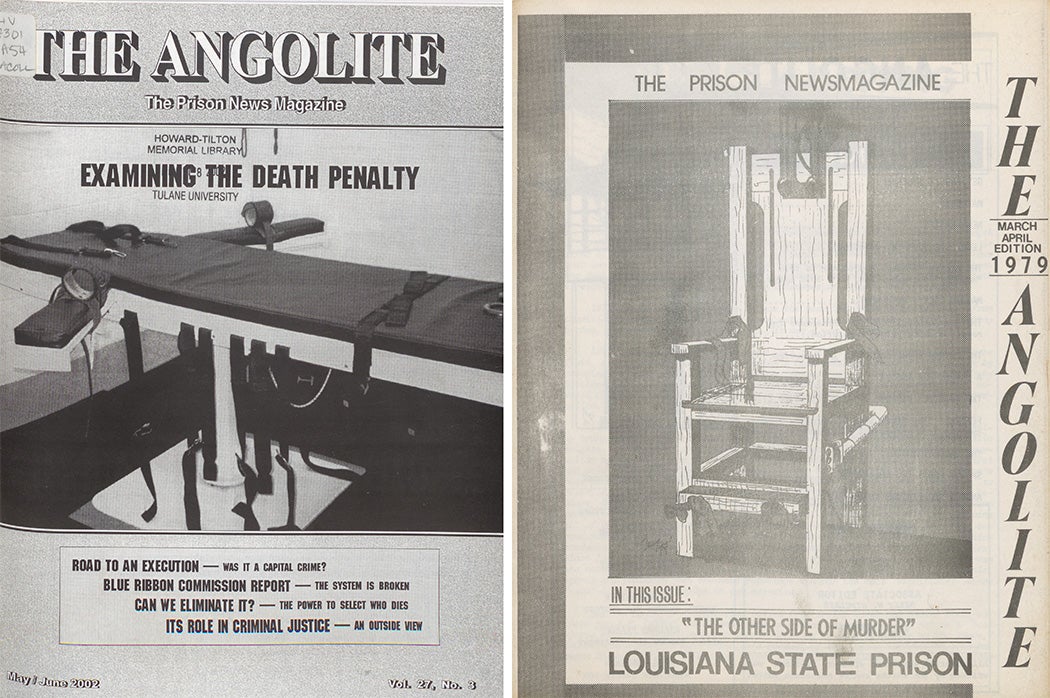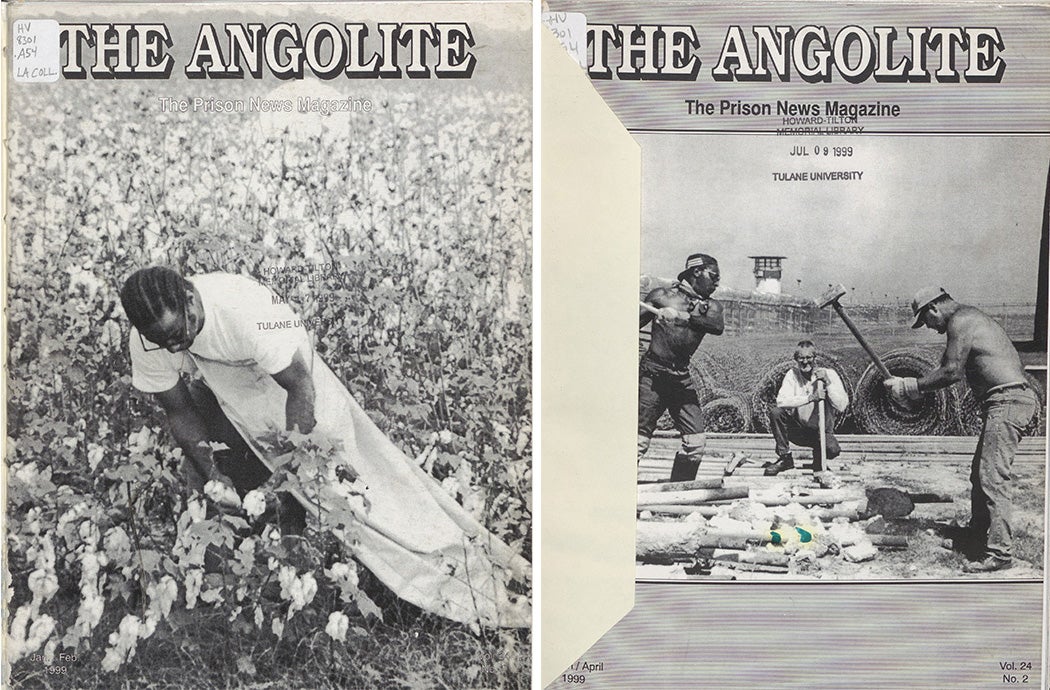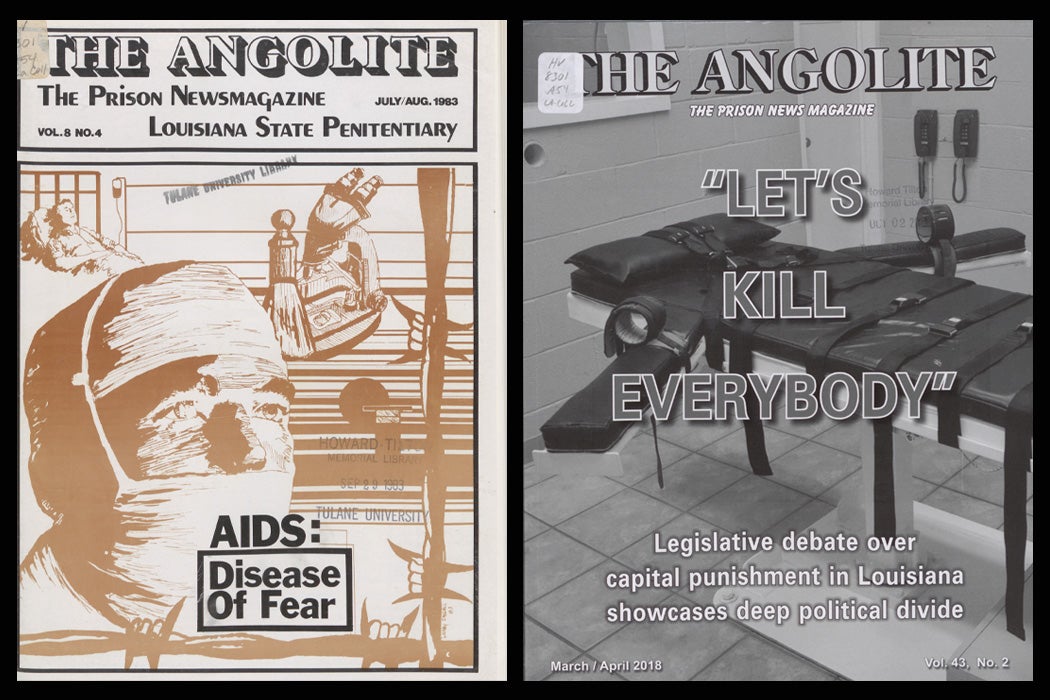The Angolite is one of the most famous prison newspapers in history, having won multiple awards and changed the popular conception of what prison journalism could be.
The paper is produced by the people incarcerated at the Louisiana State Penitentiary, colloquially known as Angola for the slave plantation that preceded it. While it is widely believed that the plantation was named after the region of Africa where people were captured and enslaved, that notion appears to be apocryphal. At present, the sprawling prison farm is 28 square miles, 18,000 acres. It is the largest maximum-security prison in the United States, and the state of Louisiana has the highest incarceration rate in the nation.
In its earlier years, the staff of The Angolite was all-white, because the southern prison still operated under a strict regime of segregation. Prior to desegregation, Wilbert Rideau had attempted to join the paper but had been turned down because, “only whites were on the magazine and they didn’t believe that a black person was qualified…” In response, Rideau started his own magazine called The Lifer. When that became successful, he was then offered a place on The Angolite. When desegregation was finally forced upon the prison, administrators hired Rideau as the first-ever Black editor for the paper, alongside co-editor and future bribery scheme whistleblower Billy Sinclair.
Rideau served the first 12 years of his sentence in solitary confinement, on death row. Upon his return to the general population after his sentence was reduced, he said that he found Angola to be “an abomination,” with killings, gang violence, drug trafficking, and sexual assault all rampant. “And I felt it was incumbent upon me to tell society, the public what’s going on, to let them know.”
With the support of the warden at the time, C. Paul Phelps, The Angolite became a free press, not bound to the same level of censorship as many other prison newspapers. Rideau says that the warden “thought that a free press could perhaps make a difference.” His stories were biting and often critical—and by most accounts made a difference. Co-editor Billy Sinclair’s piece, “The Other Side of Murder” won a George Polk Award. The landmark exposé of Angola’s prolific sexual violence, “Prison: The Sexual Jungle,” written by Rideau also won the same George Polk Award and was nominated for a National Magazine Award. It is among the most famous and influential of all prison newspaper stories in American history.
From the curious to the exceedingly brutal, The Angolite was given uncharacteristic journalistic freedom (by prison standards) to do its reporting, leaving its pages rich in history not often repeated elsewhere. In 1983, a piece ran striking a concerned tone that the plasma donation program that had been an economic lifeline for the people incarcerated at Angola for many years was being suspended due to rising fear around AIDS. The death penalty is another frequent topic, with features such as “The Other Side of Murder,” replete with graphic photos and illustrations, including of the botched execution. After serving 44 years in prison for a crime committed as a juvenile, Wilber Rideau was freed, but his 25-year legacy at the The Angolite was carried on by others.

The aging US prison population means that more elderly people are confined than ever before. With a stark look at the human cost of incarceration frail and dying people, The Angolite deftly shows the reader less-seen aspects of incarceration. Obituaries are a constant fixture of the paper, offering three-dimensional humanity to some of society’s most forgotten souls.

The prison is truly a farm and harvests several crops annually. Another point of fame or infamy, depending on perspective, is the Angola rodeo that is held twice a year. Numerous articles and photos can be found throughout the collection, the special edition magazines of which can be found elsewhere in the collection in the Angola Prison Rodeo magazine, though The Angolite itself is full of rodeo content. Boxing is yet another activity unexpectedly found at Angola that makes its way onto the paper’s pages, as do football and other sports, true to the culture of Louisiana. The media legacy of the prison even transferred into broadcast television, as described in part three of “The History of Angola Media” series titled “The Producers” written by John Corley.
Following in the tradition of the plantation it used to be, all those who can work are forced to, often in the fields for a period of time before being allowed to transfer to other jobs. While the brutality of the forced labor may have diminished over time, the practice continues today and is documented in the most recent issues.

Kerry Myers was the editor of the paper for 16 years. “I am thrilled that The Angolite is now part of the American Prison Newspapers collection,” Meyers told JSTOR Daily. “It is not only an important piece of journalism, but American journalism, having had significant impact on justice policy and law as it covered issues such as the death penalty, life without parole and extreme sentencing, the societal cost of mass incarceration, law, courts, and more.”
Weekly Newsletter
Reveal Digital’s collection currently holds nearly 300 issues of the magazine. “The magazine is an institution, having provided insight into prison life, continuously, since 1953.” The earliest edition in the American Prison Newspapers collection currently is from 1966, but the issues from the infamously violent 1970s are nearly all available. “The Angolite is historically relevant, and having been on staff there for 20 years in one capacity or another, knowing that the body of work will be available for research and reference affirms the work of the writers who helped shaped The Angolite’s journalistic mission,” said Meyers.
Editor’s Note: This article was amended to correct two typographical errors.







